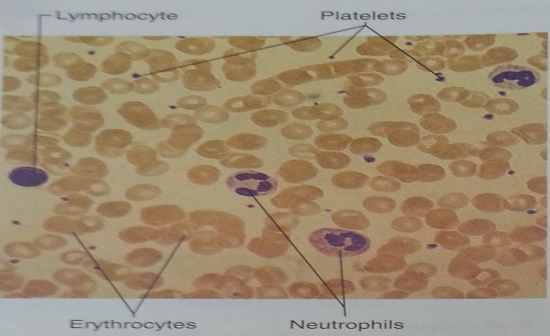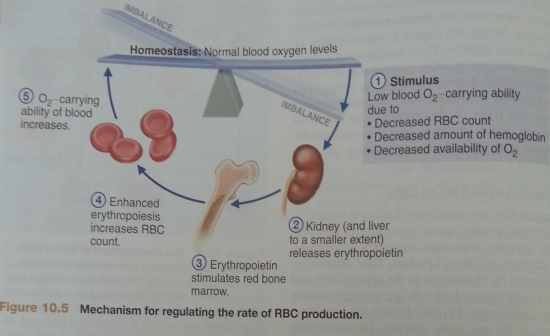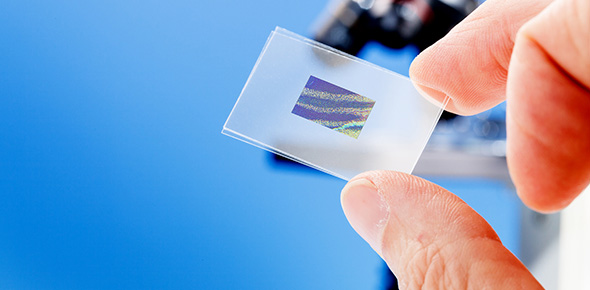Related Flashcards
Related Topics
Cards In This Set
| Front | Back |
|
What is the composition of blood?
|
Connective tissue therefore cells surrounded by a matrix of fluid and (potential) fibres
Cells - Erythrocytes (red blood cells - RBC) - Leucocytes (white blood cells - WBC) - Thrombocytes (platelets) Fluid matrix - Plasma with dissolved prtein for aking fibres which become visible/active during clotting |
|
Draw an image of what blood composion under a microscope.
|
 |
|
What are the different cells in blood?
|
Erythrocytes - red blood cells
leucocytes - white blood cells thrombocytes - plarelets |
|
What are the functions of blood?
|
Tansport, regulation and protection
|
|
Describe the structure and function of erythrocytes.
|
Red blood cells
biconcave disc therefore leads to an increase in gas exchange and can bend through capillaries there are 5,000,000/mm3 of blood no nucelus therefore don't reporduce and die about 120 days or more contain 250 million or more haemoglobin molecules 4 heam parts with an iron atom at the centre of each, to which O2 binds which causes the red colour each heam is surrounded by larfe teisted protein golbin molecule to which CO2 binds |
|
What is the shape of a red blood cell and why?
|
Erythrocytes are biconcave because it has ejected its nucleus, and mitrochonria. Being biconcave it is has an increase in gas exchange and can bend through carpillaries
|
|
Outline the control of erythrocytes production
|
E.g.
blood loss leads tp lower levels of O2 in the blood leads to kidneys relasing eythropoitein werythropoietin targets reb bone marrow red bone more increases red blood cell production increase in red blood cells leads to increased O2 levels in the blood Homeostasis is restored |
|
Draw a diagram of Homeostasis of the production of RBC
|
 |
|
What is the function of WBC
|
Leucocytes
defend against disease leave and return to the blood stream less than 1% of blood volume |
|
What are the different types of white blood cells?
|
Leucocytes types:
Neutrophils Lymphocytes Monocytes Eosinophils Basophils |
|
Describe a Neutrophil
|
Phagocytic, most numerous and 1st at site of acute infection
engulf bacteria and then die |
|
Describe Lymphoctyes
|
B cells produce antibodies
T cells act against virus-infected cells and tumours (abnormal cells) |
|
Describe Monocytes
|
Develop into tissue macrophages and become phagocytic
especially active in chronic infections enguld bacteria and survive |
|
Describe Eosinophils
|
Destroy worms
Destory antigen - antibody (immune) complex Lessent the severity of inflammation |
|
Describe Basophils
|
Stimulate inflammation by releasing histamines which leads to vasodilation and increases white blood cell in infected area
|




